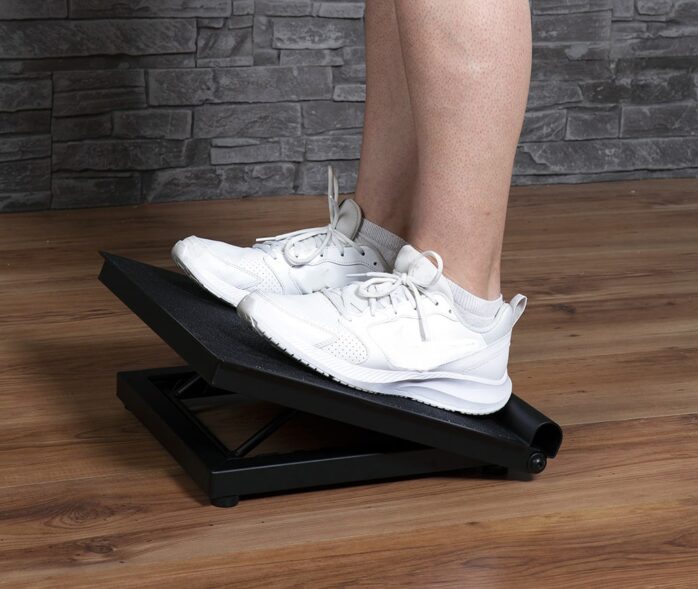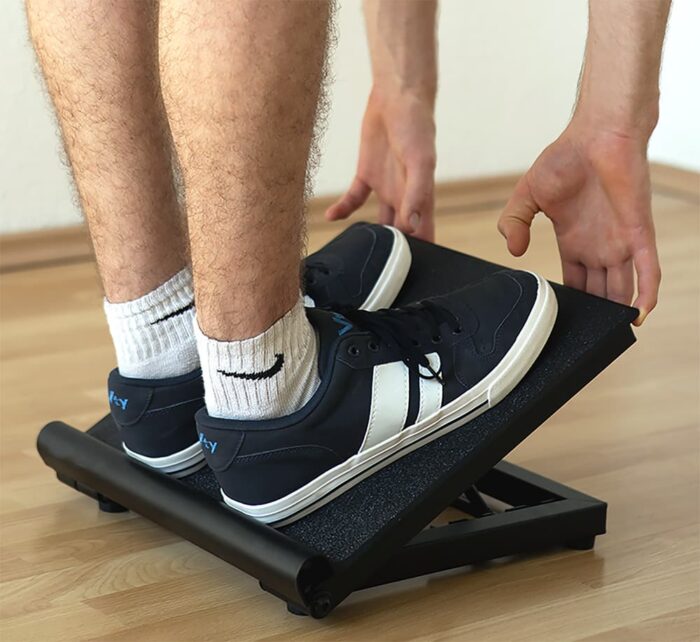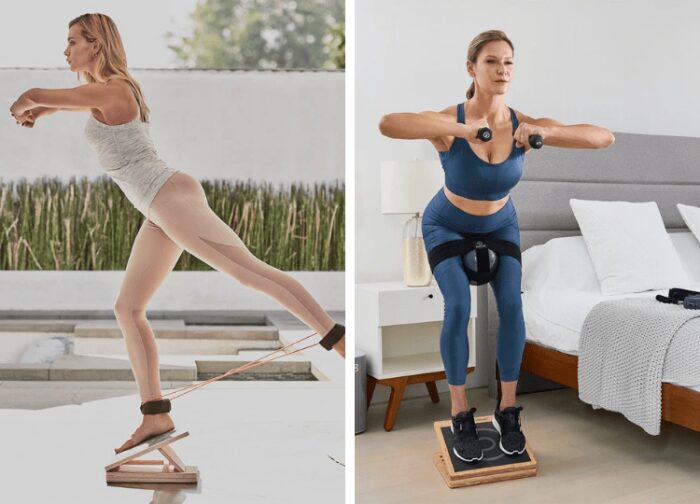
Slant boards may appear simple in design, but their applications are far-reaching and beneficial across various aspects of our lives. From physical therapy and rehabilitation to improving posture and enhancing creative skills, these inclined surfaces have proven to be versatile tools that offer a range of advantages.
Physical Therapy and Rehabilitation
Slant boards play a crucial role in physical therapy and rehabilitation settings. The incline helps promote proper body alignment, facilitating exercises that target specific muscle groups and joints. By utilizing a slant board, individuals can engage in controlled movements that aid in the recovery process, whether they are rehabilitating from an injury or managing a chronic condition. The inclined surface allows for targeted strengthening, stretching, and balance exercises, helping to restore mobility and function.

Posture Correction and Alignment
Improper posture is a common issue in today’s sedentary lifestyle, leading to a myriad of musculoskeletal problems. Slant boards provide a simple yet effective solution for correcting posture and promoting proper alignment. By using a board, individuals can assume a natural position that reduces strain on the neck, shoulders, and back. The incline encourages an upright stance, engaging the core muscles and relieving stress on the spine. Regular use of a slant board can help retrain the body to maintain correct posture throughout daily activities, improving overall spinal health.
Balance and Stability Training
Balance and stability are fundamental to everyday movements, athletic performance, and fall prevention. Slant boards offer a dynamic surface for balance and stability training. The slight incline challenges the body’s equilibrium, engaging the core muscles and lower extremities to maintain stability. By performing exercises such as single-leg stands, squats, and lunges on a slant board, individuals can improve their balance, coordination, and proprioception. This enhanced stability translates into improved performance in sports, reduced risk of falls in older adults, and increased overall body control.
Stretching and Flexibility Exercises
Flexibility is crucial for maintaining joint health, preventing injuries, and optimizing athletic performance. Slant boards facilitate effective stretching exercises by providing a stable and inclined platform. The angle of the board allows for controlled and deeper stretching of various muscle groups, including calves, hamstrings, and hip flexors. Individuals can safely perform stretches such as calf stretches, downward dog, and seated forward bends on a slant board, enhancing their overall flexibility and range of motion.

Foot and Ankle Relief
Foot and ankle discomfort, such as plantar fasciitis or Achilles tendonitis, can significantly impact mobility and quality of life. Slant boards offer relief by providing a gentle stretch and support for the feet and ankles. By standing or placing the feet on the slant board, individuals can alleviate tension, improve foot arches, and strengthen the muscles of the lower extremities. They also serve as a valuable tool for rehabilitating ankle injuries, promoting healing, and restoring mobility.
Enhancing Circulation and Blood Flow
Proper circulation is vital for overall health and well-being. Slant boards can assist in enhancing blood flow and circulation throughout the body. The incline of the board encourages blood to flow more effectively from the lower extremities back to the heart, aiding venous return. Improved circulation brings oxygen and nutrients to the muscles and tissues, promoting faster recovery and reducing muscle soreness. Additionally, enhanced circulation can benefit individuals with conditions such as diabetes or peripheral vascular disease, as it helps prevent complications and supports healthy tissue function.
Writing and Drawing Skills
Slant boards have been widely used to enhance writing and drawing skills, particularly for individuals with fine motor challenges. Positioning a slant board at an angle promotes a more optimal writing and drawing posture. This positioning reduces strain on the wrist, forearm, and shoulder, facilitating smoother movements and improving handwriting legibility. Slant boards also provide a stable surface, preventing papers from slipping and allowing individuals to focus on their creative tasks with greater ease and precision.

Education and Learning
Incorporating slant boards in educational settings can have significant benefits for students. Whether in classrooms or homeschool environments, they offer ergonomic support for reading, writing, and other learning activities. The inclined surface promotes proper posture, reducing fatigue and discomfort during extended periods of studying. Furthermore, using slant boards can help improve concentration and engagement by providing a dedicated and organized workspace.
Art and Calligraphy
Artists and calligraphers often utilize slant boards to enhance their creative endeavors. By positioning the work surface at an angle, they provide a comfortable and ergonomically friendly platform for artistic expression. The incline allows for improved control and precision when using various artistic tools, such as brushes and pens. Additionally, the slanted surface assists in achieving consistent pen angles and letterforms in calligraphy, resulting in more refined and professional-looking work.
Choosing the Right Board
When selecting a slant board, several factors should be considered, including the material, size, adjustability, and stability. Depending on individual needs and preferences, options range from basic wooden boards to adjustable models with varying degrees of incline. It is essential to choose a slant board that suits the intended purpose, whether it be for physical therapy, creative pursuits, or educational settings.
Safety Guidelines and Precautions
While they offer numerous benefits, it is essential to follow safety guidelines to prevent accidents or injuries. Users should ensure stability and durability, avoiding wobbly or flimsy constructions. It is advisable to start with a gentle incline and gradually increase the angle as comfort and confidence improve. Individuals with pre-existing medical conditions or injuries should consult with a healthcare professional before incorporating slant boards into their routine.

Conclusion
The slant board is a great tool to have in your arsenal when it comes to improving posture and increasing flexibility. It provides the perfect angle for stretching, strengthening, and reducing strain on the muscles and joints of the body. With its adjustable angles, lightweight design, and portability, it’s an ideal solution for those looking for an affordable way to improve their overall physical well-being. Whether you’re looking for relief from back pain or simply want to increase flexibility in your everyday life, using a slant board can provide the results you need.







